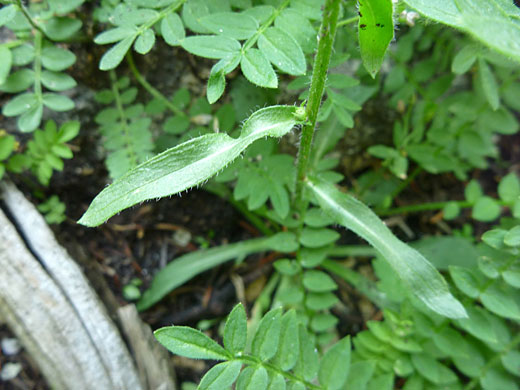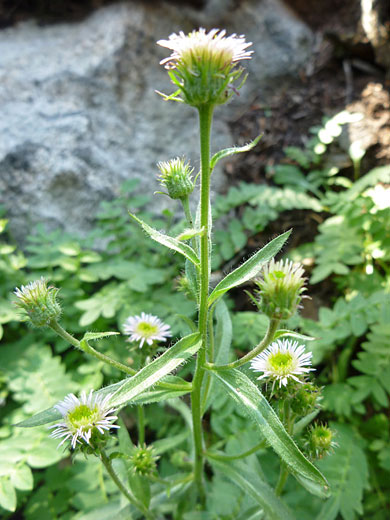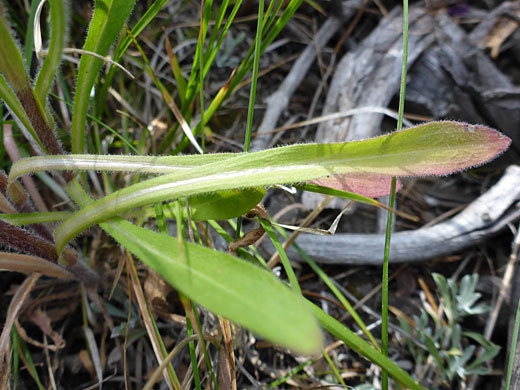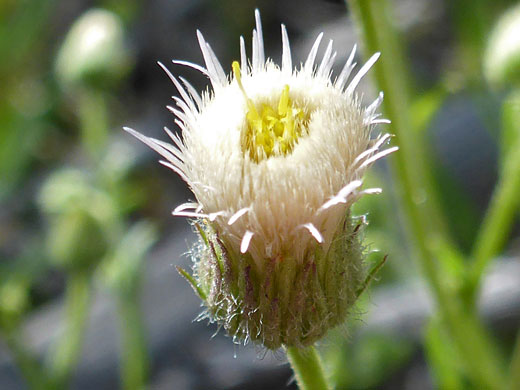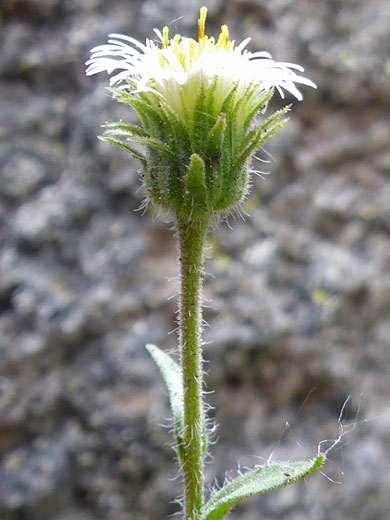Erigeron Lonchophyllus, Shortray Fleabane
Plants > Wildflowers > Asteraceae > Erigeron Lonchophyllus
Common name:
Shortray fleabane
Family:
Scientific name:
Erigeron lonchophyllus
Synonym:
Trimorpha lonchophyllus
Main flower color:
Range:
The Rocky Mountains, parts of all states to the west, and the northern Great Plains
Height:
Up to 20 inches
Habitat:
Moist or disturbed areas; streamsides, boggy meadows, moist tundra, roadsides; 4,000 to 11,800 feet
Leaves:
Spatulate or oblanceolate, with ciliate edges and smaller hairs on the surface. Usually up to 3 inches long
Season:
June to September
Erigeron lonchophyllus is easily identified by its very short, white (or pale pink) ray florets, numbering between 70 and 130, and surrounding a center of greenish yellow disc florets. The short rays allow the relatively large phyllaries to be clearly visible; they are dark green with purplish tips, straggly-hairy but not glandular, and arranged in 2 or 3 rows. Some curve outwards, others stay close to the involucre. Heads grow singly or form well-spaced racemes (spikes) of between 3 and 12, each flower at the end of a short stalklet.
Leaves are found around the base and at wide intervals most of the way along the stem (alternate positioning). Stems have a sparse covering of relatively long, bristly hairs, also found along leaf margins; leaf surfaces have shorter hairs, or are hairless.The plant is widespread across the west, and inhabits a range of different habitats.
Leaves are found around the base and at wide intervals most of the way along the stem (alternate positioning). Stems have a sparse covering of relatively long, bristly hairs, also found along leaf margins; leaf surfaces have shorter hairs, or are hairless.The plant is widespread across the west, and inhabits a range of different habitats.
All Contents © Copyright The American Southwest | Comments and Questions | Contribute | Site Map


